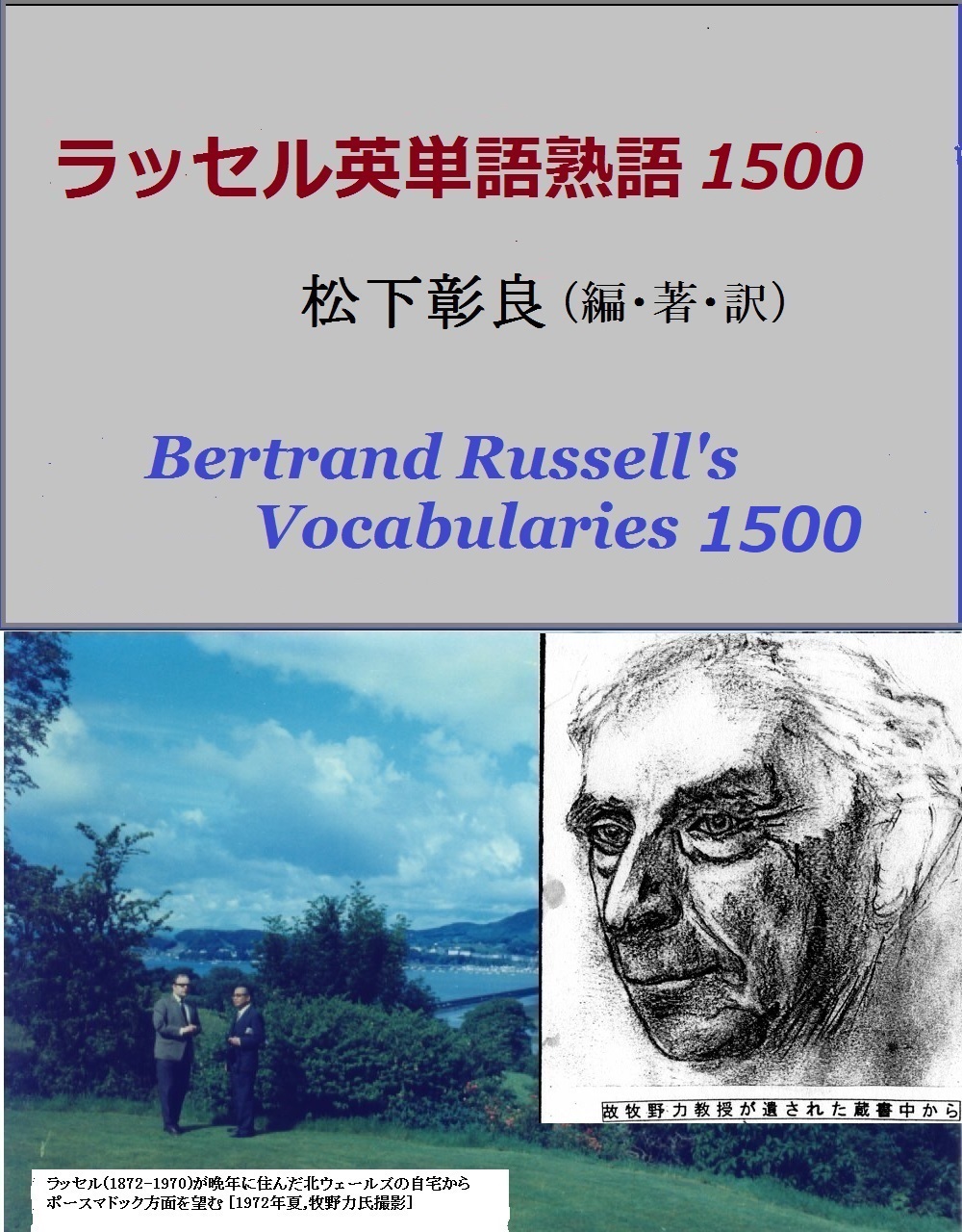バートランド・ラッセル,中村秀吉(訳)『哲学の諸問題』第1章「外見と実在」
* 出典:バートランド・ラッセル,中村秀吉(訳)『哲学の諸問題』(社会思想社,初版=1966年/新版=1996年。214pp. 教養文庫 n.1586)
* 原著: The Problems of Philosophy, 1912
 目次
目次


第1章「外見と実在」n.2(「現象と実在」)
|
* 原著:Appearance and Reality, n.2
|
わたしたちの困難を明らかにするために注意を机に向けてみましょう。この机は、眼には長方形褐色で光沢があり、触れると滑らかで冷たく、また硬い。叩くと木の音がします。この机を見たりさわったり、聞いたりした人はみなこの記述に同意するでしょうから、困難は起こりそうもないようです。ですが、もっと精確であろうとしますと、たちまちやっかいなことになります。わたしは、この机がどの部分も「ほんとうに」(really)同じ色をしていると信じていますが、光を反射する部分は他の部分よりもはるかに明るく見えますし、また、ある部分は反射光で白く見えます。わたしが動くと光を反射する部分がちがってきますので、机の上の光の外見的な分布もちがってきましょう。したがって数名の人が同時にこの机を見れば(注:当然の結果として,何人かの人が同時にこの机をみていれば)、そのうちのどの2人もまったく同じ光の分布を見ることはないことになります。2人がまったく同じ視点から見ることはできないし、少しでも視点がちがえば光の反射の仕方がちがってくるからです。
実用上はたいていこのような変化はどうでもよいのですが、画家にとっては大変重要なことです。画家は、ものが「ほんとうに」もっていると常識でいう色を、もっているようだと思う習慣を忘れて、見える通りにものを見る習慣を身につけなければなりません。ここまでくると、わたしたちは哲学でたいていの困惑をひき起こす区別のうちの一つの始まりにきていることになります。それは「外見」(appearance)(注:「現象」と訳したほうがよい。)と「実在」(reality)の区分、つまり事物がそう見えるところのものと実際にそうあるところのものとの区別です。画家は見えるところのものを知りたいのですが、生活人や哲学者は実際にあるところのものを知りたいのです。けれども哲学者がこういうものを知りたいという望みは生活人のそれよりも強いし、またこの問題に答えるむずかしさを知っているために、生活人よりも困惑しています。
|
 To make our difficulties plain, let us concentrate attention on the table. To the eye it is oblong, brown, and shiny, to the touch it is smooth and cool and hard ; when I tap it, it gives out a wooden sound. Any one else who sees and feels and hears the table will agree with this description, so that it might seem as if no difficulty would arise; but as soon as we try to be more precise our troubles begin. Although I believe that the table is 'really' of the same colour all over, the parts that reflect the light look much brighter than the other parts, and some parts look white because of reflected light. I know that, if I move, the parts that reflect the light will be different, so that the apparent distribution of colours on the table will change. It follows that if several people are looking at the table at the same moment, no two of them will see exactly the same distribution of colours, because no two can see it from exactly the same point of view, and any change in the point of view makes some change in the way the light is reflected.
To make our difficulties plain, let us concentrate attention on the table. To the eye it is oblong, brown, and shiny, to the touch it is smooth and cool and hard ; when I tap it, it gives out a wooden sound. Any one else who sees and feels and hears the table will agree with this description, so that it might seem as if no difficulty would arise; but as soon as we try to be more precise our troubles begin. Although I believe that the table is 'really' of the same colour all over, the parts that reflect the light look much brighter than the other parts, and some parts look white because of reflected light. I know that, if I move, the parts that reflect the light will be different, so that the apparent distribution of colours on the table will change. It follows that if several people are looking at the table at the same moment, no two of them will see exactly the same distribution of colours, because no two can see it from exactly the same point of view, and any change in the point of view makes some change in the way the light is reflected.
For most practical purposes these differences are unimportant, but to the painter they are all-important : the painter has to unlearn the habit of thinking that things seem to have the colour which common sense says they 'really' have, and to learn the habit of seeing things as they appear. Here we have already the beginning of one of the distinctions that cause most trouble in philosophy - the distinction between 'appearance' and 'reality', between what things seem to be and what they are. The painter wants to know what things seem to be, the practical man and the philosopher want to know what they are; but the philosopher's wish to know this is stronger than the practical man's, and is more troubled by knowledge as to the difficulties of answering the question.
|

